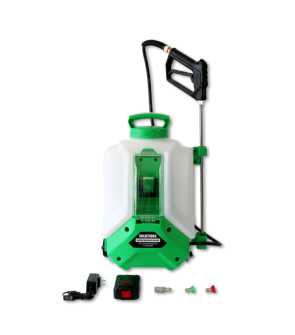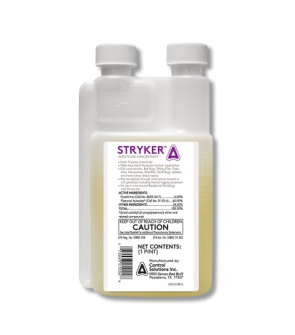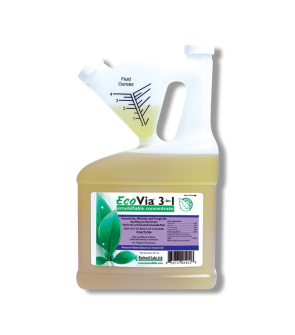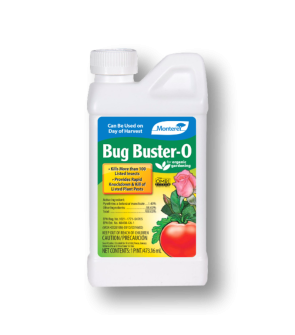Gain access to personalized product screening, the best pricing, rewards, and more!
Most Effective Products
Boll Weevil Control: How to Get Rid of Boll Weevils
This page is an expert guide on removing boll weevils using the products and methods our experienced pest control specialists suggested. Follow this guide and use the recommended products. We guarantee you will successfully remove boll weevils from your home.
Have you come across little black bugs in your home? Or maybe you have a garden or crop area and have noticed them there. They very well could be a rare infestation of boll weevils.
Boll weevils, also called cotton bugs, are notorious pests that cause significant damage wherever cotton is growing. They are a damaging pest on croplands and eat into farmers' profits by feeding on cotton plants. Homeowners might struggle with pest issues spreading from nearby fields and their private gardens becoming infested.
While boll weevils don’t thrive indoors, they can sometimes wander into homes, especially if plants near the house are infested, becoming a nuisance.
If you are worried about the threat of boll weevils, follow our DIY boll weevil control guide, which will give you some insight into this pest and how you can eliminate its presence.
Identification
Before you can proceed with a treatment program, you must be sure that your pest is indeed a boll weevil. Misidentification can lead you to use the wrong treatment products and waste time and money. Below are some characteristics of boll weevils to aid in identification:

- Boll weevils are small beetles, about 6 mm long (a 1/4 of an inch), with a distinctive elongated snout that curves downward. They can also be easily identified by the two small spurs located on the front thigh segment (femur) of each of their legs.
- Their bodies are usually grayish-brown to black and covered with tiny scales, giving them a slightly rough texture. They have six legs and bent antennae that often look like tiny elbows.
- Boll weevils also have fully developed wings beneath hard wing covers (elytra), allowing them to fly short distances to find new cotton plants or habitats. When resting, their wings are folded neatly under the elytra, which protect them from damage.
Use the description and image above to help you properly identify whether the pest you notice is a boll weevil. If you are unsure, contact our experts; we will help you identify the pest you are facing.
Inspection
You can proceed to inspection once you have confirmed the infestation is boll weevils. During this phase, you will locate the areas where boll weevils are infesting and observe the conditions allowing them to thrive. This information will help you determine where to apply pesticide applications.

Where To Look
Boll weevils are rarely found inside homes, but when they do appear, they typically enter by accident, often seeking shelter or carried in on infested items. Inside, they may be found near windowsills, door frames, or light sources, as they are attracted to light and tend to gather near entry points.
They do not feed or reproduce indoors, so their presence in the home is usually temporary. However, they can also hide in cracks around baseboards, behind furniture, or in storage areas.
Boll weevils are primarily found outdoors in cotton, where they infest cotton plants by feeding on the buds and bolls. These pests tend to overwinter in plant debris, cotton stalks, and nearby vegetation.
Outside of cotton fields, they can sometimes be found in nearby gardens or ornamental plants like hibiscus or mallows.
What To Look For
The main sign to look for if you have an invasion of boll weevils is the boll weevils themselves. They will only breed and feed where they can find cotton plants, primarily cropland.
Start by inspecting cotton plants closely. Check flower buds, bolls (cotton seed pods), and leaves for small beetles or feeding damage.
Look for signs like holes in the cotton flower buds or bolls, which will cause them to shrivel and drop prematurely.
Damaged or missing cotton fibers inside the bolls and stunted or malformed plants can also indicate their presence.
Besides cotton, boll weevils can also damage related plants like hibiscus and okra by feeding on their flower buds and seed pods.
Treatment
Before you begin any type of pesticide application, you will need to wear the appropriate personal protective equipment (PPE) when mixing or spraying.
To control and kill boll weevils, certain insecticides containing malathion, chlorpyrifos, carbaryl, lambda-cyhalothrin, permethrin, or pyrethrins are most effective.
We recommend Stryker Pyrethrin Insecticide for effective indoor and perimeter control in homes due to its fast-acting, broad-spectrum formula that quickly targets common pests.
For crops like cotton or large commercial properties, EcoVia 3-in-1 Natural Insecticide offers a safe, natural alternative that controls pests while supporting sustainable agriculture.
Step 1: Treat Indoors & Perform Perimeter Treatment Outdoors
 Although boll weevils are not common household pests, they can occasionally end up indoors.
Although boll weevils are not common household pests, they can occasionally end up indoors.
Stryker Pyrethrin Insecticide is an excellent concentrate insecticide that offers fast knockdown of many flying and crawling insects, including boll weevils. It contains pyrethrins, which are derived from chrysanthemum flowers and are highly effective as a contact insecticide.
Determine how much Stryker Pyrethrin Insecticide to use by measuring the square footage of the treatment area. Find the square footage by measuring the treatment area's length and width in feet, then multiplying them together (length X width = square footage).
You will need to mix with water in a hydraulic sprayer, such as a handheld pump sprayer.
For general indoor applications in homes and warehouses, mix 4.25 fl. oz. of Stryker Pyrethrin Insecticide per 1 gallon of water. Apply 1 gallon per 750 sq. ft.
For severe indoor infestations in homes and warehouses, use 2.125 fl. oz. of product per 1 quart of water (equals 8.5 fl. oz. per gallon). Apply 1 gallon per 750 sq. ft.
Remove all food utensils, foodstuffs, shelf paper, and other objects before treatment
Adjust your sprayer nozzle to deliver a coarse, narrow spray pattern.
Focus your spray application on the places where crawling insects like boll weevils are most likely to hide. Pay special attention to cracks and crevices.
Apply to cupboards, shelves, storage areas, and other listed areas where you noticed boll weevils.
Spray along baseboards, floor-wall junctions, and behind or underneath appliances where insects seek warmth and darkness. Don’t forget to treat door and window frames, cabinet edges, and pantry shelves, especially if you store cotton products or grains nearby.
Allow treated surfaces to dry before covering shelves with clean paper and before replacing any utensils, foodstuffs, or other items.
Once you are done treating the inside, move on to an outdoor perimeter treatment to prevent boll weevils from returning indoors.
For outdoor perimeter treatments, apply 2.125 to 4.25 ounces of product per gallon of water to treat 750 sq. ft.
Spray 2 to 3 feet up the foundation wall and 6 to 10 feet wide around the structure on the adjacent soil.
Keep people and pets away from the treated area until the spray has dried.
Step 2: For Cotton and Other Crops
If you’re growing cotton or other consumable plants and want to protect them naturally from pests without harsh chemicals, EcoVia 3-in-1 Natural Insecticide is an excellent choice.
EcoVia 3-in-1 Natural Insecticide is a plant-based, botanical insecticide that combines insecticidal, fungicidal, and repellent properties to protect crops naturally. It’s safe for use on consumable plants and cotton, providing effective pest control without harmful chemical residues.
You will need to mix with water or oil in a backpack sprayer, mist blower, compressed air sprayer, power sprayer, ULV fogger, mechanical aerosol misting/fogging equipment, or other conventional application equipment to make applications.
We recommend using the Solutions Electric Backpack Sprayer for faster and easier coverage
A general application on crops will use 1 oz. of EcoVia 3-in-1 Natural Insecticide per 1 gallon of water.
Add approximately half of the required amount of water or oil to the tank and then add the appropriate amount of product, agitate, and add the remaining water or oil. The product will have a milky white appearance once diluted with water.
Apply the solution until the plant surfaces are wet, but not to the point of run-off.
Plants with known sensitivity to this product include basil, evergreens, maple trees and other plants that are burned by horticultural oils such as 435 oil.
If concerned about particular plant sensitivity, test treat a small area first and wait 48 hours to determine if burning occurs.
Crop sites such as cannabis (where cultivation is allowed by state and/or local law), edible plants, fruit-bearing plants and trees, vineyards, cotton, lumber, and other cultivated commodities may be treated. It is also suitable for organic production.
Prevention
Once the boll weevil infestation has been eliminated, you should ensure these pests do not return. With the following steps you can prevent boll weevils:
- Check any items you have purchased and brought in from another place, especially if they are second-hand. Aside from that, it should be unlikely that you will suffer another infestation from boll weevils as long as you don't grow cotton plants in or around your home.
- Inspect and seal cracks around doors, windows, and foundations with caulk or expanding foam to prevent adult weevils from entering your home.
- Crop rotation is essential to break the pest’s life cycle by avoiding continuous cotton planting in the same field. After harvest, it’s important to destroy cotton stalks and debris quickly, as these can serve as hiding places for overwintering boll weevils. Early planting and harvesting can also reduce the window of vulnerability for the crop.
- Ensure that tractors, plows, and harvesting tools are free from plant debris and weevils when moving between fields. For homeowners, make sure your pruning tools and mowers are clean.
- In the garden, promptly remove old plant debris and dead stems where boll weevils may hide or overwinter. Rake and remove fallen plant debris, including fruit and vegetables.
- Finally, make reapplications of Stryker Pyrethrin Insecticide and EcoVia 3-in-1. Stryker Pyrethrin Insecticide has no residual control on its own, but it may be tank mixed with residual insecticides to provide long term protection. EcoVia 3-in-1 may be reapplied in 24-hour intervals until pest activity has reduced to desired levels of control.
Key Takeaways
What Are Boll Weevils?
- Boll weevils are a notorious pest on croplands due to their affinity for eating and breeding cotton plants. They are very rare in or around homes.
How to Get Rid of Boll Weevils
- To get rid of boll weevils in homes, we recommend using Stryker Pyrethrin Insecticide. For cropland sites, it's best to use EcoVia 3-in-1 Natural Insecticide.
Prevent Boll Weevils Reinfestation
- To prevent future boll weevil infestations, rotate crops, inspect second-hand items, and seal entry points like cracks around doors and windows. Maintain clean tools and garden spaces, remove plant debris promptly, and consider using EcoVia 3-in-1 on crops and Stryker Pyrethrin around your home's perimeter for added protection.













